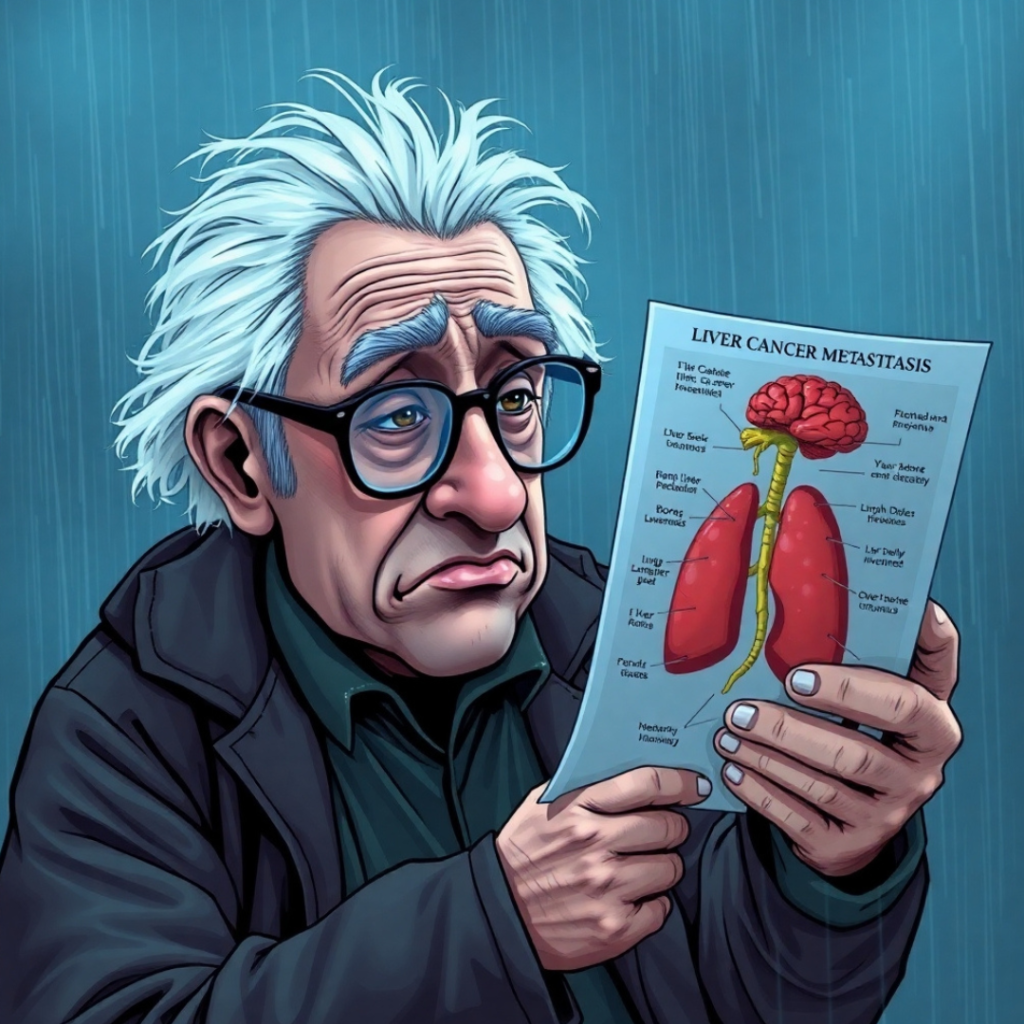Liver Cancer Mets: What It Means and How to Take Action

Liver Cancer Mets: When Liver Cancer Decides to Pack Its Bags and Travel
So, you’ve heard the words “liver cancer mets” and now your brain is spinning faster than my nephew’s fidget spinner (which, by the way, I still don’t understand). What does that even mean? Well, in simple terms, it means your liver cancer has decided it’s not content staying put—like a relative who crashes on your couch and suddenly claims squatters’ rights in your guest room, your fridge, and your car. If you’re not familiar with how liver cancer starts, take a look at our guide on liver cancer symptoms and early signs to understand what comes before metastasis.
This process is called metastasis, which is just a fancy way of saying the cancer cells got restless and decided to travel to other parts of the body through the bloodstream or lymphatic system. That’s why it’s called metastatic liver cancer—because it has metastasized (spread) beyond the liver.
Now, I don’t want to alarm you, but liver cancer isn’t exactly a homebody. It has a few favorite destinations when it decides to relocate:
- Lungs – Because, of course, breathing shouldn’t be easy, right?
- Bones – Apparently, my aching knees weren’t enough. Now cancer wants in on the action.
- Lymph nodes – The cancer version of sending out invitations to an unwanted party.
- Brain – Not common, but when it happens, it’s like your neurons have suddenly decided to play musical chairs.
Now, you might be wondering, why does this happen, and more importantly, what can be done about it? Keep reading, and I promise to break it all down—without the confusing medical jargon that makes you feel like you accidentally walked into a quantum physics lecture.

Why This is a Big Deal
Now, let’s be real. If you’ve been diagnosed with liver cancer mets, you’re probably feeling a rollercoaster of emotions—frustration, fear, confusion, and maybe even a little rage. And if you’re like me, you cope with bad news by yelling at the TV when your sports team loses.
When liver cancer spreads, it becomes trickier to treat, and the symptoms start getting more creative. That’s right—as if one set of problems wasn’t enough, now you’ve got different organs deciding to join the party. Want to know more about how age affects your odds? Read about liver cancer survival rates by age to see what might apply to your situation.

Symptoms of Liver Cancer That Has Spread
The tricky thing about liver cancer mets is that the symptoms depend on where the cancer has spread. So, let’s do a little detective work and figure out what might be happening.
Liver-Related Symptoms (Because It’s Still the Main Hub of Trouble)
- Jaundice – Yellow skin and eyes because your liver is staging a protest and refusing to filter toxins properly.
- Ascites – A fancy word for fluid buildup in the abdomen, which makes you feel like you swallowed a balloon.
- Fatigue – Because your liver isn’t processing nutrients efficiently, and it turns out that’s kind of important.
- Unexplained Weight Loss – And for once, it’s not from skipping dessert (if only this were happening on purpose, right?.
Symptoms Based on Where the Cancer Has Spread
Lungs:
- Shortness of breath (because life likes a challenge).
If you’re noticing symptoms that affect your lungs, take a look at how liver cancer may progress in our stage-by-stage survival guide. - Persistent cough (as if allergy season wasn’t already annoying enough).
- Chest pain (reminder: no, it’s not just heartburn).
- Shortness of breath (because life likes a challenge).
- Bones:
- Sudden bone fractures (because breaking a hip was on my bucket list).
- Aching pain, especially in the back or ribs (because gravity is already doing enough damage).
Brain (Rare but Possible):
- Headaches (because migraines weren’t doing the job well enough).
- Vision changes (ah yes, now my glasses are officially useless).
- Memory issues (where did I put my keys? Oh, right, they’re in the fridge).
Lymph Nodes:
- Swelling in the neck, underarms, or groin (because the swelling was getting jealous of all the attention the fatigue was getting).
- General feeling of weakness (as if we weren’t already tired from life).
Now, if you’ve noticed any of these symptoms, don’t pull a “let’s just wait and see” move. Talk to your doctor. Catching things early means better symptom management and a fighting chance to slow things down.

How is Metastatic Liver Cancer Treated?
Alright, let’s get to the important part—what can actually be done about this? Because as much as I love a good rant, we need solutions.
1. Systemic Therapies: Targeting Cancer Everywhere
Since liver cancer mets has already packed its bags and gone sightseeing, doctors often recommend whole-body treatments to fight cancer cells wherever they’re hiding.
- Chemotherapy: Traditional cancer-killing drugs (with the lovely bonus of side effects that make you feel like a retired superhero).
- Targeted Therapy: Medications like Sorafenib or Lenvatinib that specifically attack cancer cells, like heat-seeking missiles (finally, a little precision!).
- Immunotherapy: A newer approach that trains your own immune system to go full-on bodyguard mode against cancer cells.

2. Localized Treatments: Keeping the Liver Under Control
Even if the cancer has spread, controlling the liver tumors is still crucial.
- Transarterial Chemoembolization (TACE): A procedure that delivers chemotherapy directly into the liver tumor to shrink it (because precision matters).
- Radioembolization (TARE): Uses radiation beads to target the tumor (tiny radiation warriors doing their job).
- Ablation Therapy: Uses extreme heat or cold to destroy cancer cells (like a microwave or deep freeze but for medical purposes).
3. Managing Symptoms & Improving Quality of Life
Even when a cure isn’t possible, there are still ways to live better with metastatic liver cancer:
- Palliative Care: Helps control pain, fatigue, and nausea, making everyday life more manageable.
- Nutritional Support: Eating a liver-friendly diet (think less fried food, more boring but healthy stuff). Need help figuring out what to eat? Explore our Ultimate Guide to Liver Health for detox tips, meal ideas, and lifestyle changes that matter.
- Exercise: Light activity like walking or yoga (no marathons necessary).
4. Clinical Trials: The Future of Cancer Treatment
There are new treatments being tested all the time, so clinical trials might be worth looking into. If traditional options aren’t working, it’s always good to know what’s on the horizon.
Final Thoughts: Facing Liver Cancer Mets with Strength & Hope
Look, I get it—liver cancer mets is no picnic. But here’s the deal: you’re not powerless.
Here’s What You Can Do Today:
✅ Talk to Your Doctor – Early intervention can make a difference.
✅ Stay Informed – Knowledge is power. Start with our Liver Cancer 101 guide for the basics and build from there.
✅ Seek Support – You’re not in this alone.
✅ Take Care of Your Body – Eat better, move a little, and get some rest.
💡 Want to learn more? Check out Johns Hopkins Medicine’s treatment overview for expert-reviewed insights on metastatic liver cancer.
And remember, a diagnosis doesn’t define you. Stay strong, stay informed, and don’t lose your sense of humor—because if there’s one thing I know, it’s that laughter is the best medicine (unless your doctor prescribes something stronger). 🚀
Visit our Contact Page and let us know how we can improve this guide
We’d love to hear from you!
